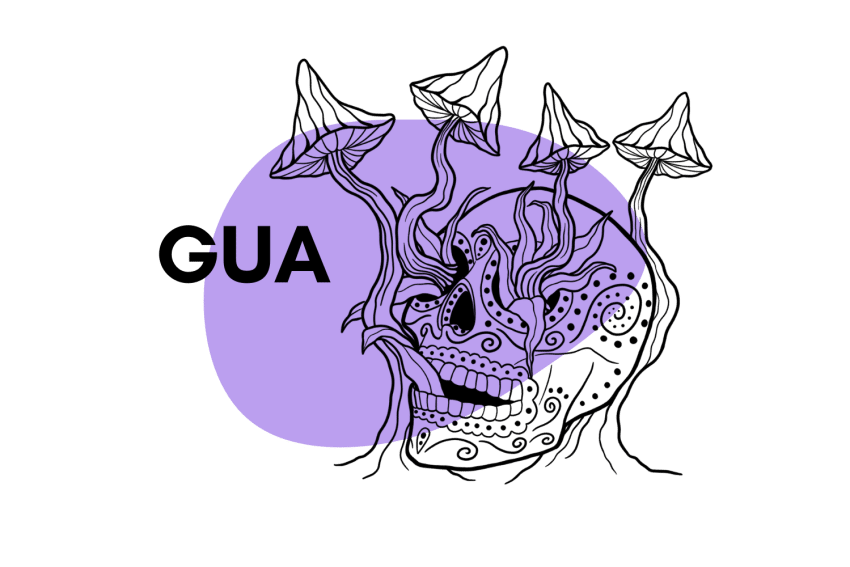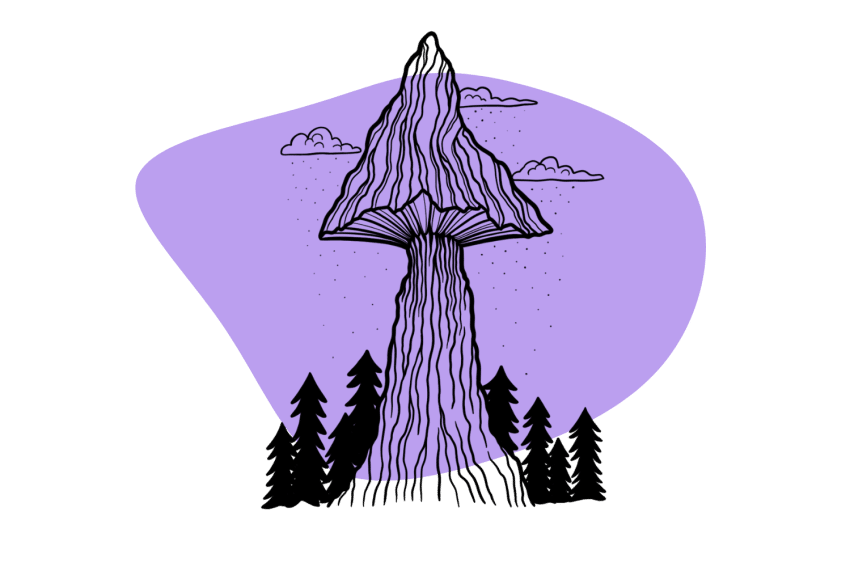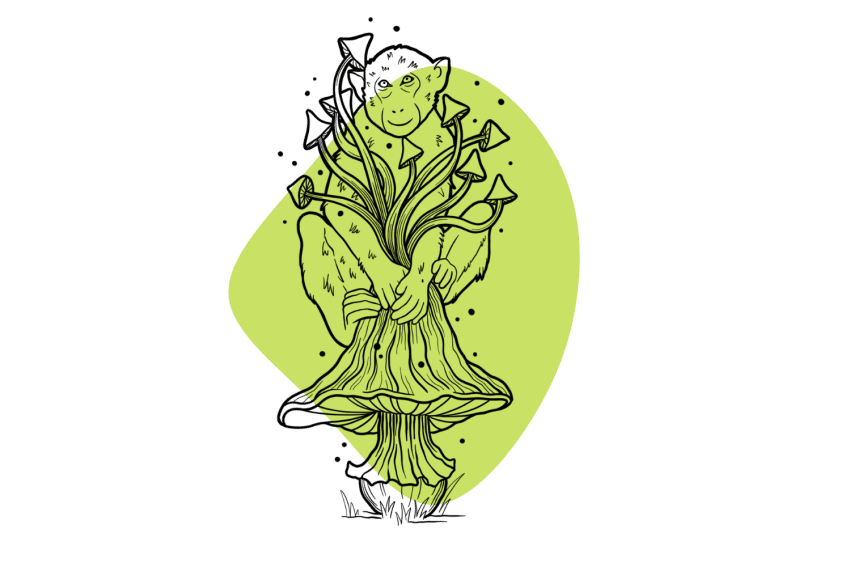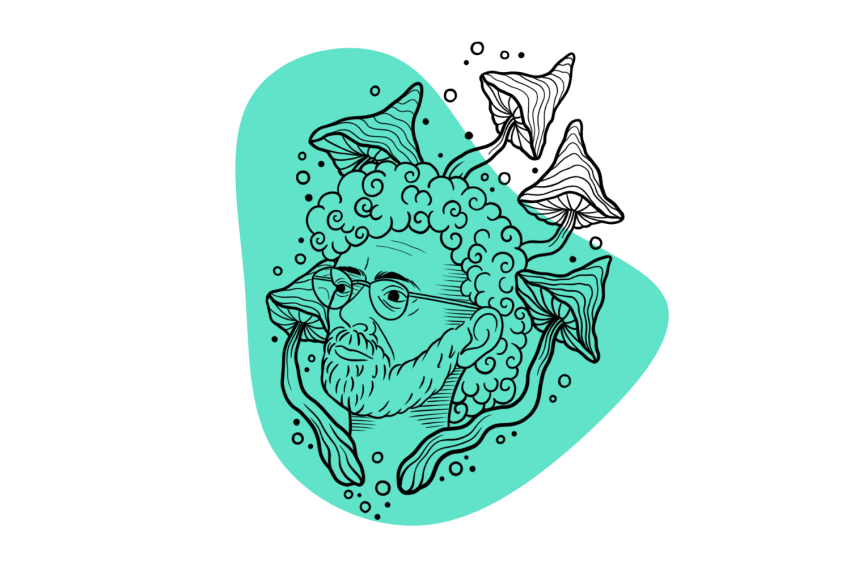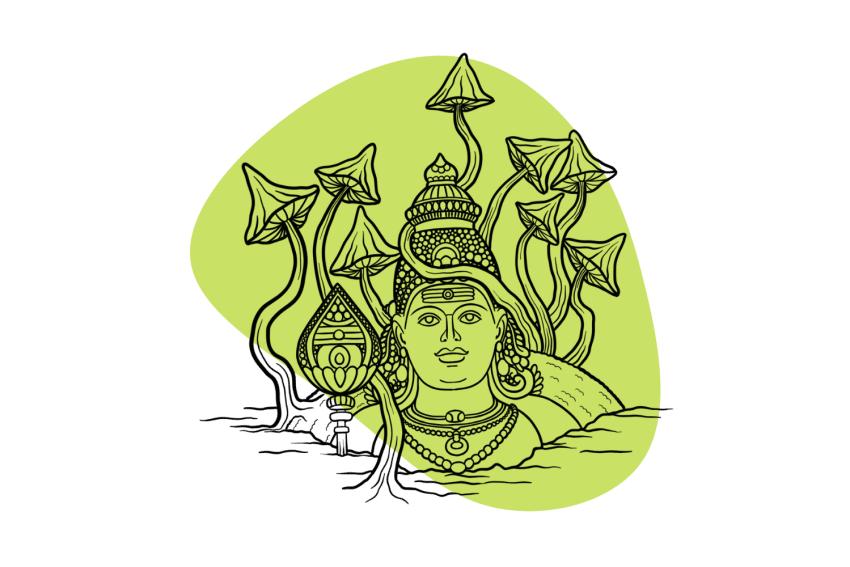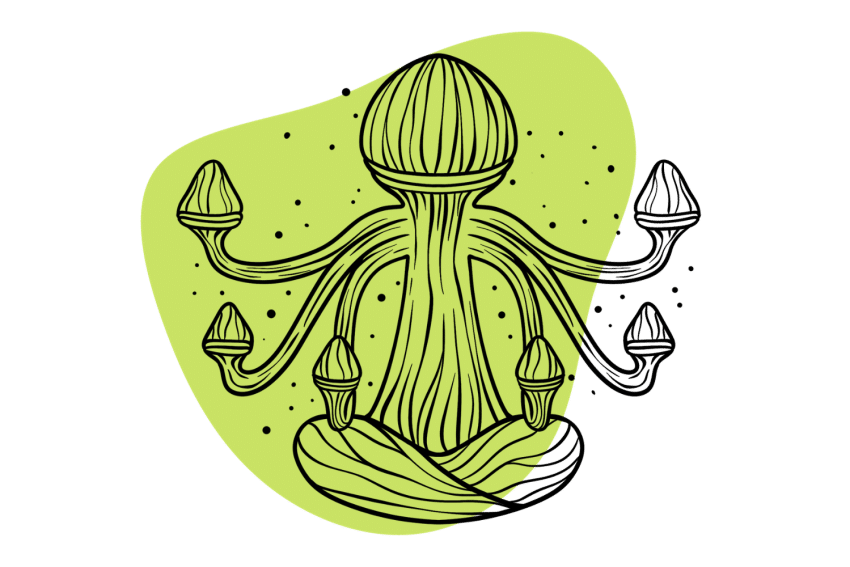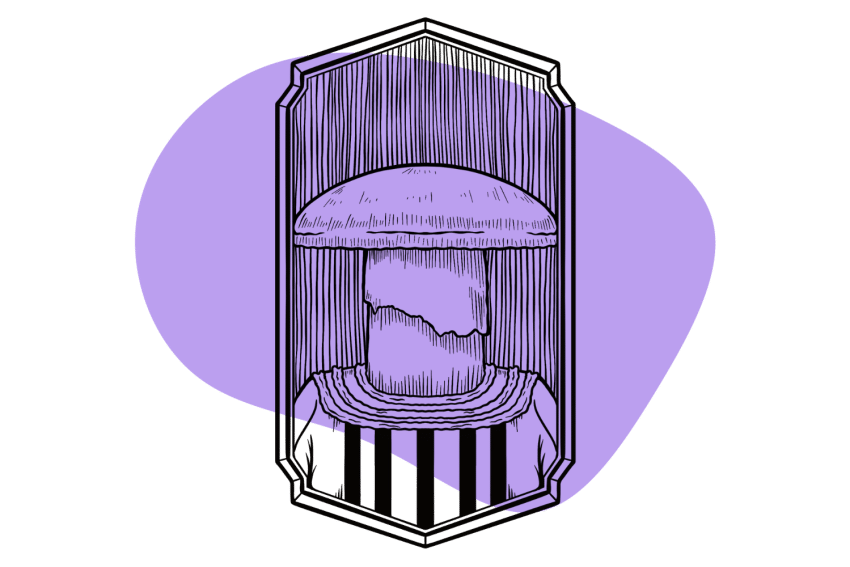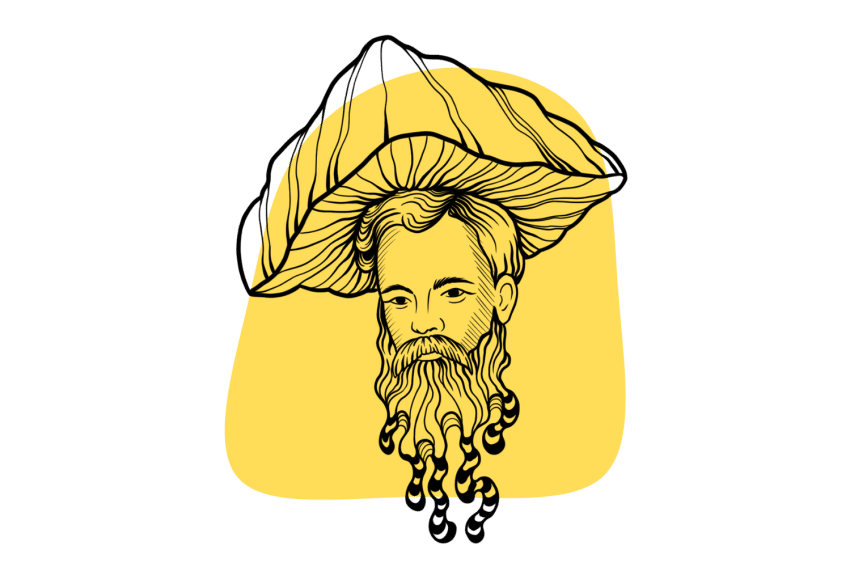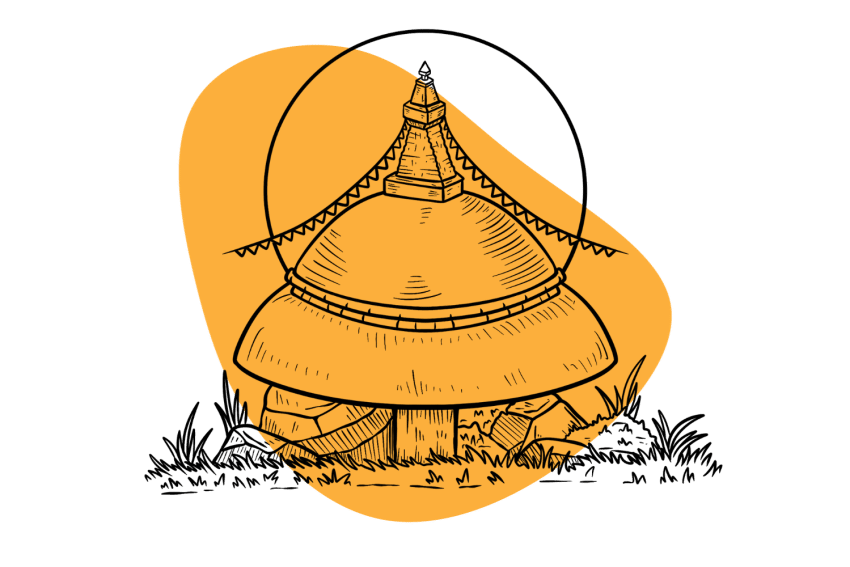The Tasmanian Strain: Exploring This Magic Mushrooms Unique Characteristics & Features
The Tasmanian strain isn’t going to blow your socks off in terms of potency, but it’s easy to grow and reproduce. If you’re new to mushroom cultivation and consumption, want a strain for microdosing, or are interested in microscopy, this strain could be for you…
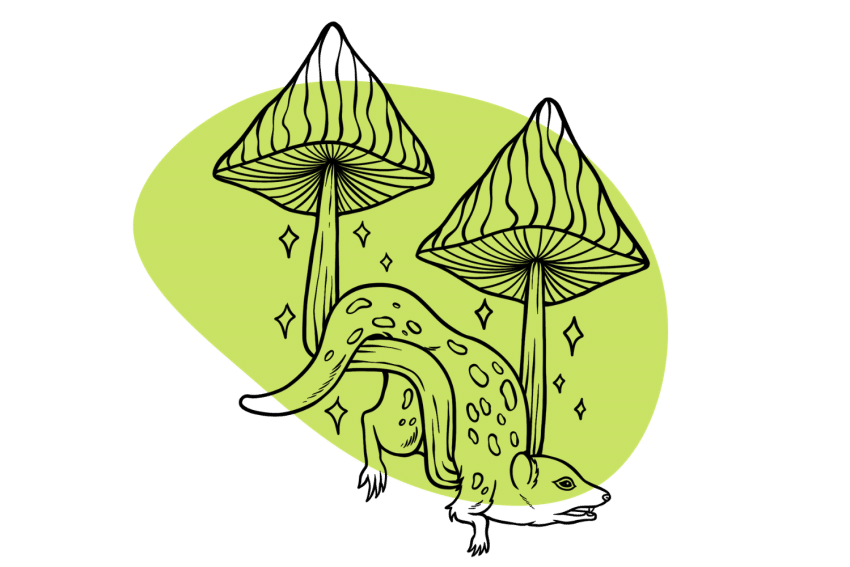
The Tasmanian magic mushroom strain gets its name from the location the original sample was collected from — Tasmania.
Tasmania is a large island off the southern tip of Australia that’s rich with flora and fauna. The climate is perfect for fungal growth, and thousands of species of mushrooms — some psychedelic — thrive there.
This strain produces medium to large-sized fruits — occasionally reaching heights of over 20 centimeters (8 inches). Although tall, Tasmanian strain mushrooms are relatively slender, and the caps themselves don’t reach such enormous sizes.
The Tasmanian strain is a fast colonizer and is incredibly resistant to contamination. However, it prefers higher temperatures compared to some other strains and won’t do as well in a cooler environment. Regardless, it’s an easy strain to grow and a good choice for beginners.
The potency of Tasmanian shrooms is low — producing around 0.40% psilocybin — making it a good choice for beginners or those wishing to microdose with psilocybin.
For those interested in producing spores for microscopy or reproduction, you can’t get much better than the Tasmanian strain. These mushrooms are prolific sporulators, and collecting large samples is easy. The mushrooms can be removed with the veil attached, then split open to collect the spores.
Jump to section:
- The history of the Tasmanian strain
- Tasmanian strain’s potency
- The Australian relatives of the Tasmanian strain
- Where to buy Tasmanian spore samples
- How to cultivate Tasmanian cubensis mushrooms
- Some other Psilocybe cubensis strains that sporulate heavily
I’ll also be answering four frequently asked questions about Psilocybe cubensis, the species’ many variants, and other species within the genus.
→ Learn about over 100 species of psychedelic mushrooms
Tasmanian Strain Specs:
| Potency | Mild |
| Cultivation | Beginner |
| Species | Psilocybe cubensis |
| Substrate Recommendation | Rye Grain or BRF (Brown Rice Flour) |
| Sold By | Spores 101 (🇺🇸/🇨🇦), Sporeslab (🇨🇦), Miracle Farms (🇺🇸/🇨🇦), The Magic Mushrooms Shop (🇪🇺) |
History of the Tasmanian Strain
There are hundreds of different strains of Psilocybe cubensis, but only some have a long and interesting history. Unfortunately, the Tasmanian strain is one without much of a history — at least what we know.
Related: Magic Mushroom Strain Guide (100+ Strains Explained)
The Tasmanian strain was collected from somewhere on the island of Tasmania at some point during the early 2000s. We don’t know exactly who the mycologist that collected it is. However, it’s rumored that the first samples met the hands of an amateur mycologist known as “BIO” — his online pseudonym.
Other than this small amount of information, we don’t know much else about the Tasmanian strain. It has grown in popularity since its introduction to the market. Tasmanian strain spores samples are available from many reputable vendors in the United States, Canada, Europe, and of course, Australia.
Tasmanian Strain Potency & Psilocybin Content
Although the Tasmanian strain has a lot of desirable traits, it’s not particularly potent. Potency isn’t everything, but the more experienced psychonaut may prefer something a little stronger.
The Tasmanian strain produces around 0.44% total tryptamines — around 0.442% of that is psilocybin.
In the Oakland Hyphae Psilocybin Cup, one sample of the Tasmanian strain — submitted by an anonymous cultivator — produced 1.42 milligrams of psilocybin per gram of dried mushroom and less than 0.10 milligrams of psilocin.
Although mild — even for a Psilocybe cubensis shroom — the Tasmanian strain does produce psychedelic effects, even at lower doses; it’s just not as intense as some other varieties. These mushrooms are perfect for people interested in microdosing, beginners to magic mushroom consumption, and those wishing to consume threshold doses.
Where to Buy Tasmanian Strain Spores
The Tasmanian strain is well-established, and spore samples can be purchased from a selection of reliable online spore vendors across the globe. You’ll find spores available as pints, swabs, and sterile spore syringes in the United States, Canada, the United Kingdom, and most of Europe.
Here’s where to Buy Tasmanian strain spore samples:
- If you live in the United States — Spores 101, Miracle Farms, High Desert Spores
- If you live in Canada — Spores 101, Sporeslab, Planet Spores
- If you live in Europe — The Magic Mushrooms Shop (🇪🇺), Shiny Spores (🇬🇧)
→ View all spore vendors & grow kit suppliers
The Tasmanian Strain’s Australian Relatives
Although there are likely several Psilocybe cubensis variants on Tasmania, the Tasmanian strain is the only one to be collected and made public so far. However, there are a few other strains from nearby Australia that share similarities.
Here are the Tasmanian strain’s Aussie relatives:
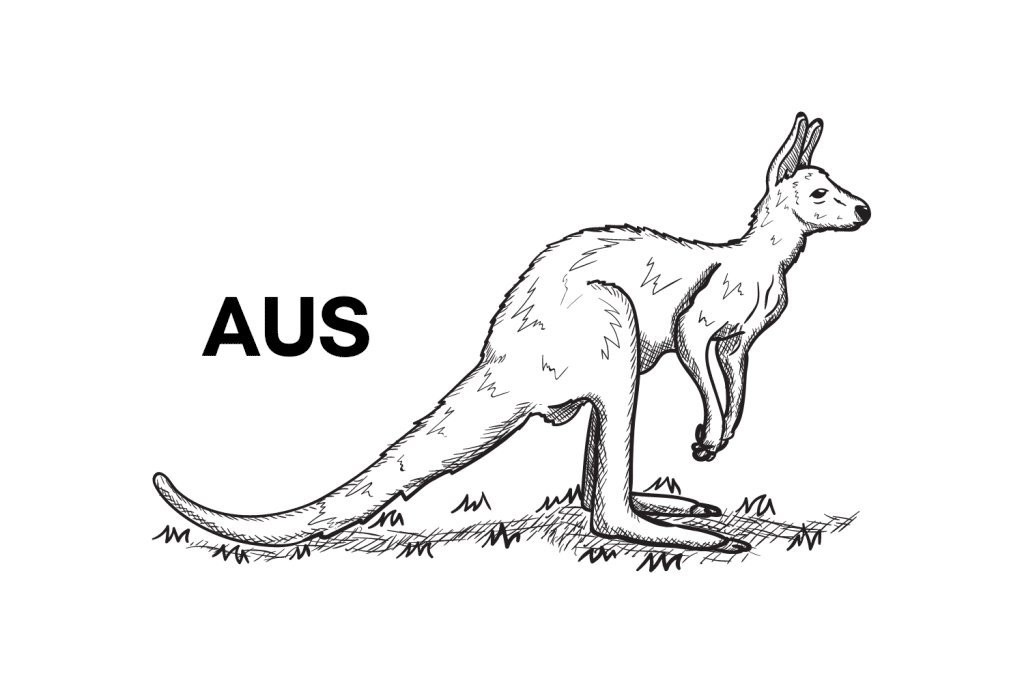
1. The Australian Strain
The Australian strain — as the name suggests — was discovered in Australia. The exact location the first sample was collected from is unknown.
Often called “the Aussie” or “Gold Tops” in Australia, this strain is popular. The mushrooms are large in size with golden tops and tall stems similar to the Tasmanian strain. The Aussie strain is a little more potent but more or less on par with the Tasmanian strain.
It shares the same great colonization speed, resistance to mold and bacteria, and fast prolific fruiting characteristics. It’s an excellent strain for beginner growers and those that wish to cultivate a large number of mushrooms.
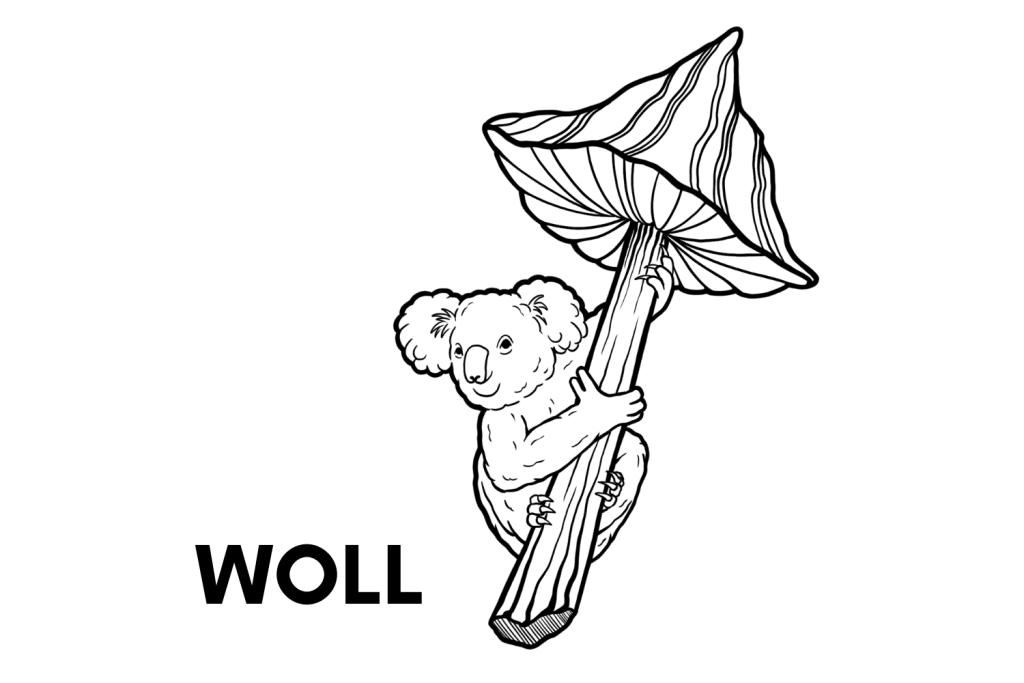
2. The Wollongong Strain
The Wollongong strain is another Aussie strain that shares similarities with Tasmanian shrooms. This strain was first discovered growing close to Wollongong (hence the name) — a coastal city south of Sydney.
This strain has been popular in Australia for decades but has only made it to the North American market fairly recently through the vendor Ralphsters Spores. This strain has average potency and produces dense clusters of large golden brown mushrooms.
The Wollongong strain shares the same aggressive colonization habits and disease resistance with the Tasmanian strain. It’s also a fairly prolific sporulator.
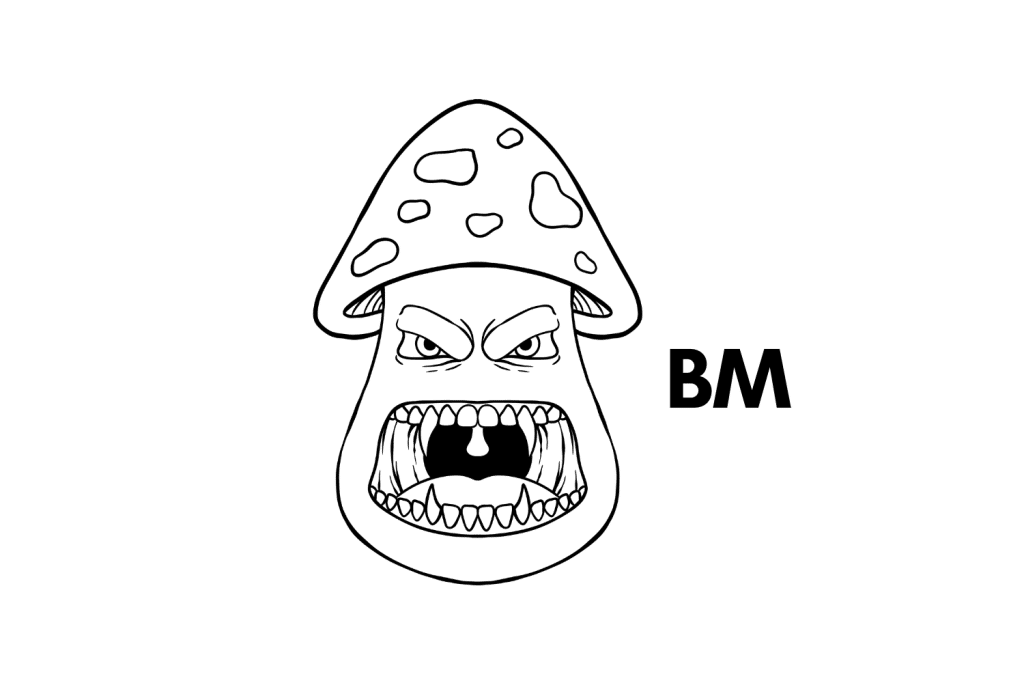
3. The Blue Meanies Strain
The Blue Meanie strain — not to be confused with the species with the same common name (Panaeolus cyanescens) — is a popular Aussie strain with average potency.
Its name comes from the distinct blue hues that occur on the cap and stems when the mushrooms are damaged and bruised. Although this blue bruising occurs with most strains, it’s more prevalent on Blue Meanies mushrooms because they’re quite pale-colored.
Appearance-wise, these shrooms are similar to the Australian strain. The strain is fast to colonize, fruit, and disease resistant — making it the perfect option for the beginner grower.
How to Grow Tasmanian Strain Mushrooms
There are several species of psychedelic mushrooms, but Psilocybe cubensis is the easiest to cultivate in an artificial environment. The Tasmanian strain is resistant to contamination, can cope with unoptimized environments, and is fast to colonize and fruit — this makes it an incredibly easy strain to cultivate, even for beginners.
Tasmanian mushrooms can be grown in the same way as other edible and psychedelic mushrooms. The easiest cultivation method is called PF-Tek (Psilocybe Fanaticus Technique).
You can learn how to grow Psilocybe cubensis mushrooms using our in-depth cultivation guide: How to Grow Magic Mushrooms: The Easy Way.
For now, here’s a quick rundown of how to grow Tasmanian mushrooms using PF-Tek:
Step 1: Preparation of the Growing Medium
The Tasmanian strain will grow on pretty much any substrate. I’d recommend starting with BRF cakes (brown rice flour mixed with vermiculite) if you’re new to mushroom cultivation.
A series of mason jars must be filed with the substrate before being placed in a pressure cooker for 30 minutes — this will sterilize the jars and the substrate. They must then be left to cool inside the pressure cooker for two to three hours.
Step 2: Inoculation of the Growing Medium
Now the substrate-filled jars have been sterilized, they must be inoculated with Tasmanian strain spores. This is a simple process but it’s vital that everything is sterilized using isopropyl alcohol — any contaminants that enter the growing environment can completely ruin the chances of producing mycelium.
2 CCs of spore-filled liquid must be injected into the substrate before the jars are sealed with the lids and some foil to ensure they remain contaminant-free for the duration of the next process.
Step 3: Incubation of the Jars
The inoculated jars must be incubated for around two weeks to allow the mycelium to form. Tasmanian shrooms do better at slightly higher temperatures — the incubator should be kept between 28 to 30 ºC (84 to 86 ºF).
Step 4: Fruiting of the Mycelium Cakes
Once the jars are completely full of mycelium, the cakes can be removed and placed inside a simple fruiting chamber. The chamber should be kept between 23 to 25 ºC (74 to 78 ºF). After a few days, the first small mushrooms will appear — avoid touching them as this can cause them to abort.
The small pinhead mushrooms will mature over the coming days until they’re mature enough to harvest. Mushrooms will continue to sprout from the mycelium cakes until the colonies eventually succumb to mold.
Due to the long period of fruiting, you’ll need to dry the mushrooms if you want to store a large amount for future use. This is simple. The mushrooms can be air-dried in a well-ventilated, dimly-lit area or a food dehydrator. Once dry, they can be stored in jars with a small packet of food-safe silica gel.
Does any of this sound a bit out of your depth?
Don’t worry; magic mushroom grow kits eliminate the need for steps one to three of the cultivation process. These kits contain live mycelium that’s ready to fruit — this allows you to skip to the fun part and start harvesting Psilocybin mushrooms in as little as a week after receiving the kit.
Other Strains That Are Heavy Sporulators
The Tasmanian strain is a notoriously heavy sporulator — a trait that makes it ideal for those that want to collect spores for microscopy or reproduction.
If you’re interested in the Tasmanian strain for its spore production, you may be interested in these:
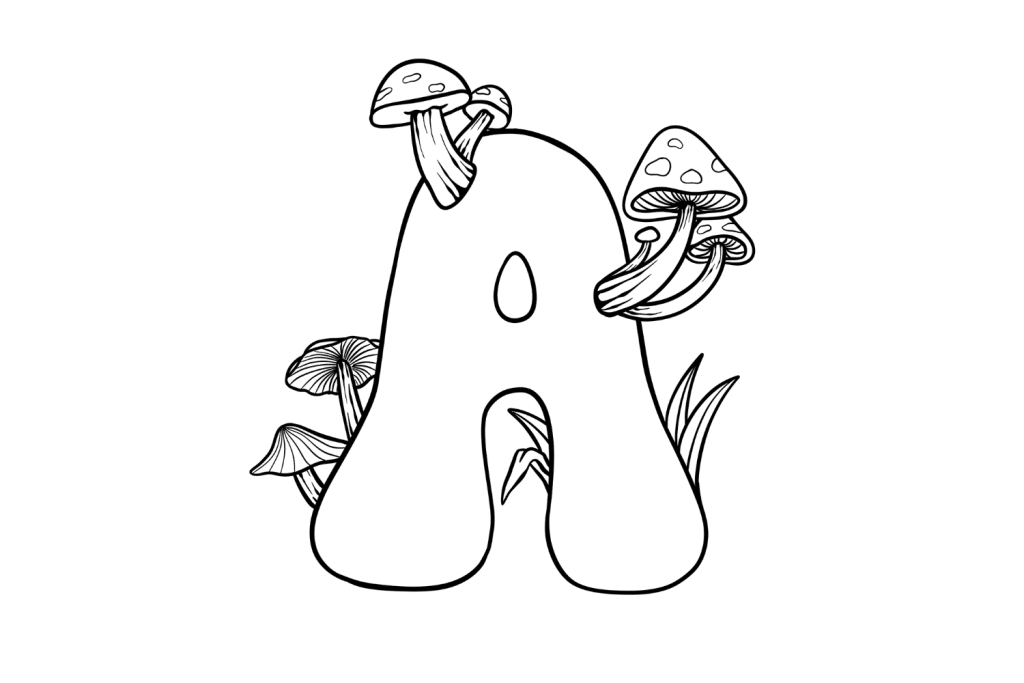
1. The A+ Strain
The A+ strain — also known as A-Strain — was developed by an amateur mycologist and mushroom breeder that goes by the online handle “Mr. G.”
This strain is famed for producing large mushrooms with yellow caps that produce above-average tryptamine levels. The A+ strain is a heavy sporulator and is perfect for those that wish to collect spores for microscopy or reproduction.
A+ is highly resistant to contamination, able to grow in an unoptimized environment, and colonizes quickly — making it a good choice for the beginner.
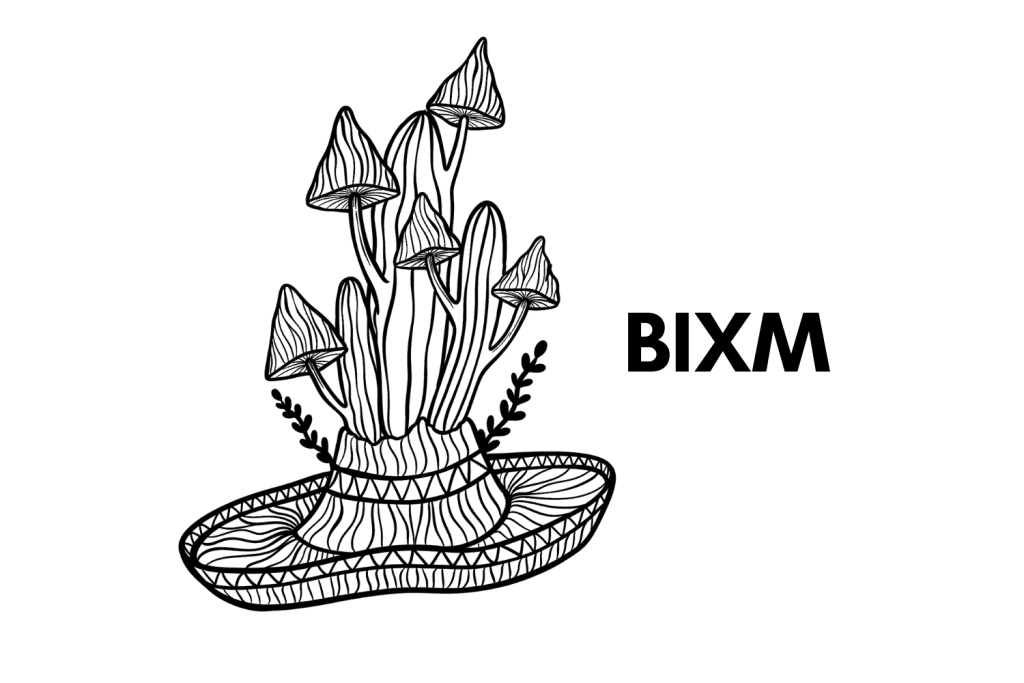
2. The Bix Mex Strain
The Bix Mex strain is an isolation of the original Mexican cubensis strain. It has small spindly mushrooms with characteristic flat caps with a light-colored ring around the rim. This strain is a heavy sporulator — covering the mycelium cakes in thick black spores if left too long before harvest.
This strain produces average-potency shrooms. It’s easy to grow thanks to its colonization speed and resistant nature. However, spore samples are very difficult to come by.
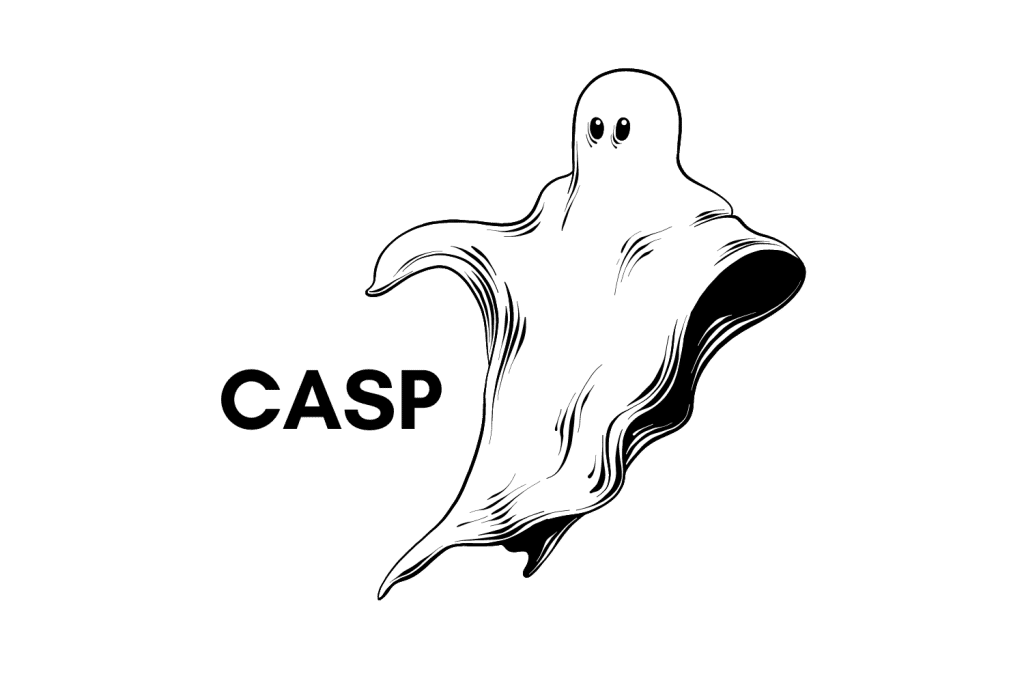
3. The Casper Strain
The Casper strain produced gray-colored fruits. It’s not an albino or leucistic strain, but the pale mushrooms are certainly ghostly — hence the name.
This is a very potent strain, with one sample entered into the Spring 2022 Psilocybin Cup producing 1.51% psilocybin, 0.08% psilocin, and a total tryptamine level of 1.79%.
Casper mushrooms are heavy sporulators and must be harvested before the veil breaks; otherwise, your entire fruiting chamber will be covered in thick dark spores. If harvested with the veil attached, it can be delicately broken, and the spores collected for microscopy or reproduction.
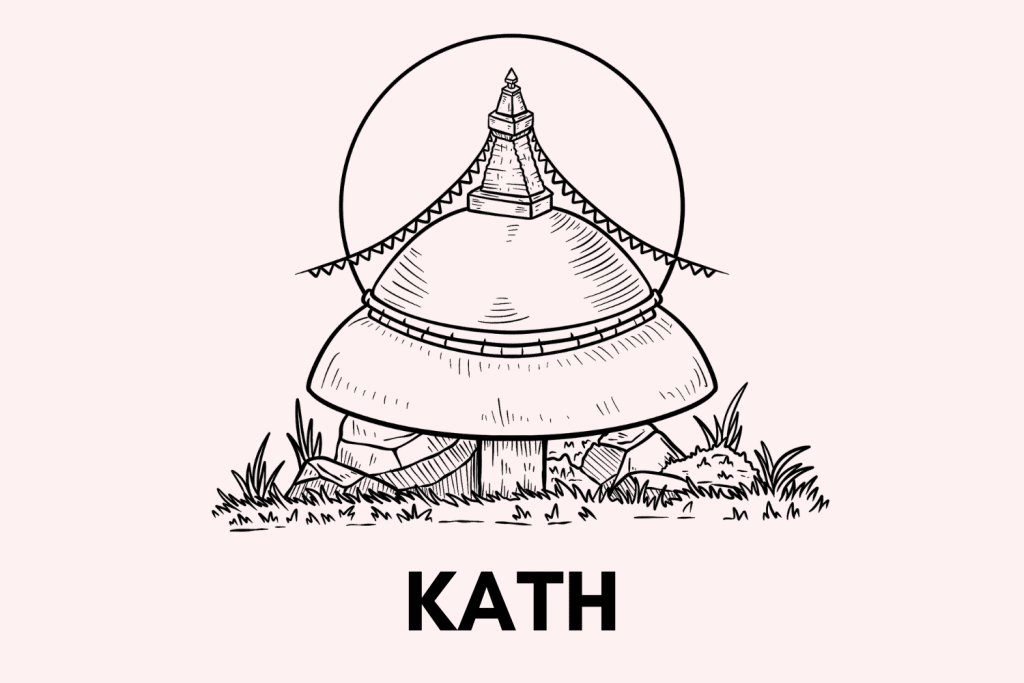
4. The Kathmandu Strain
The Kathmandu strain is named after the capital city of Nepal. Believed to have been collected by John “Mushroom” Allen during his travels of the region, the Kathmandu strain shows all the traits of an easy-to-grow beginner strain. It’s fast to colonize, resistant to contamination, and produces dense clusters — even in unoptimized conditions.
These mushrooms have above-average potency and are relatively heavy sporulators. If harvested with the veil still attached, large amounts of spores can be collected with ease.
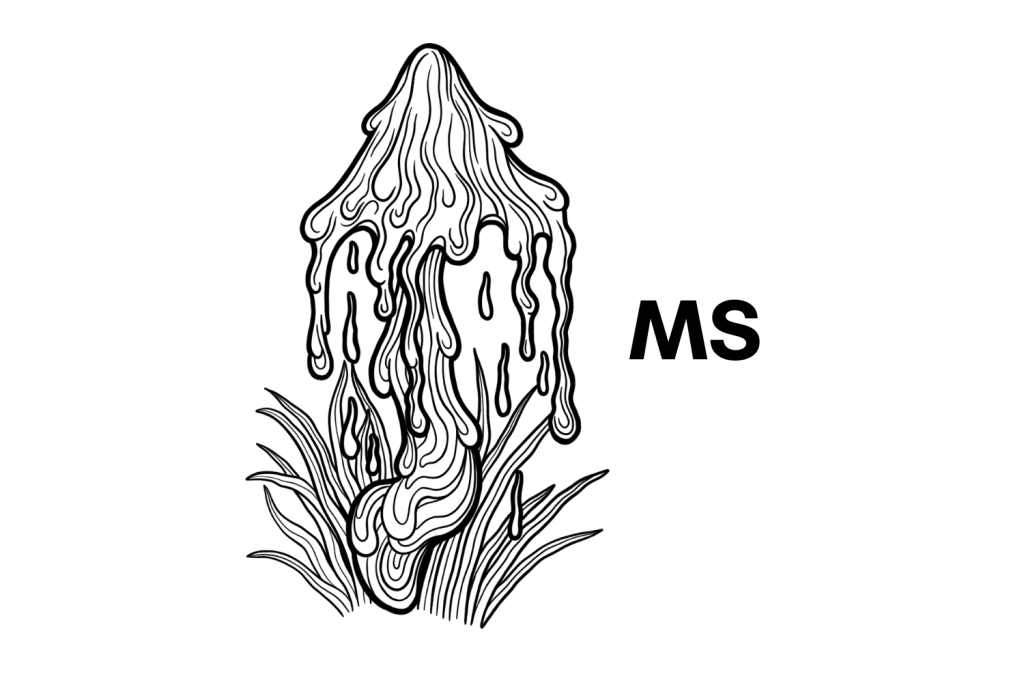
5. The Mississippi Strain
The Mississippi strain was collected from somewhere in Mississippi close to where the Dixieland strain was collected. Both strains share several traits, but the Mississippi strain seems to be the most prolific sporulator of the pair.
This strain produces dense clusters of large-sized mushrooms with average potency. It’s relatively easy to grow and can be approached by the beginner.
Frequently Asked Questions
1. How Many Psilocybe cubensis Strains Come From Tasmania?
Very few strains of Psilocybe cubensis have been discovered in Tasmania. In fact, the Tasmanian strain is the only variant currently available for purchase from the country.
Although only one strain has made it out of Tasmania, the conditions for mushroom growth are perfect there. There are likely dozens of Psilocybe cubensis strains waiting to be collected from the wilds of Tasmania as well as several other known and potentially undiscovered psychedelic mushroom species.
2. What Other Countries Can You Find Psilocybe cubensis in?
Psilocybe cubensis is the most common psychedelic mushroom species on the planet. It can be found in six of the seven continents growing in a range of different altitudes and climates at all times of the year.
Here’s a list of known countries where P.cubensis shrooms grow naturally:
- Argentina
- Australia
- Barbados
- Belize
- Bolivia
- Brazil
- Cambodia
- Colombia
- Costa Rica
- Cuba
- The Dominican Republic
- Fiji
- French Guiana
- Guadalupe
- Guatemala
- Hawaii
- India
- Jamaica
- Malaysia
- Martinique
- Mexico
- Nepal
- New Zealand
- Paraguay
- Peru
- The United States
- Tasmania
- Thailand
- Trinidad
- Uruguay
- Vietnam
For a full list of where magic mushrooms grow and how to find them, check out our guide on magic mushroom foraging.
3. What Other Species Exist Within the Psilocybe Genus?
Psilocybe cubensis isn’t the only psilocybin-producing mushroom in the Psilocybe genus. There are over 130 known species within the genus that grow all over the world. New Psilocybe species are being discovered all the time.
Related: List of Psilocybin Mushroom Species (And Other Psychoactive Fungi)
Some species are far more potent than Psilocybe cubensis. Species such as Psilocybe azurescens and Psilocybe semilanceata (the Liberty Cap) produce three to four times the amount of psilocybin as the typical P.cubensis mushroom.
I’m not going to list all 130 species here, but here are some of the most well-known Psilocybe species:
- Psilocybe allenii
- Psilocybe azurescens
- Psilocybe baeocystis
- Psilocybe caerulescens
- Psilocybe colombiana
- Psilocybe cubensis
- Psilocybe cyanescens
- Psilocybe mexicana
- Psilocybe semilanceata
- Psilocybe stunting
- Psilocybe tampanensis
- Psilocybe weilii
4. What Psychedelic Compounds are Present in Psilocybe cubensis Mushrooms?
The main psychedelic compounds found in Psilocybe cubensis and other species in the Psilocybe genus are psilocybin and its active metabolite psilocin.
Psilocybin and psilocin are psychedelic alkaloids in the tryptamine class. Psilocybin isn’t readily available for absorption by the human body. Before the effects take hold, the psilocybin must be converted to psilocin in the body. Some people also soak their shrooms in lemon juice to help convert some of the psilocybin into psilocin before ingestion to speed up the onset of effects.
Baeocystin is another naturally occurring tryptamine alkaloid found in Psilocybe cubensis mushrooms. However, it’s unknown whether this compound alone causes any psychoactive effects.
It’s believed that Baeocystin contributes to the overall psychedelic experience produced by the mushrooms in a similar way that multiple cannabinoids produce an “entourage” effect in cannabis.

